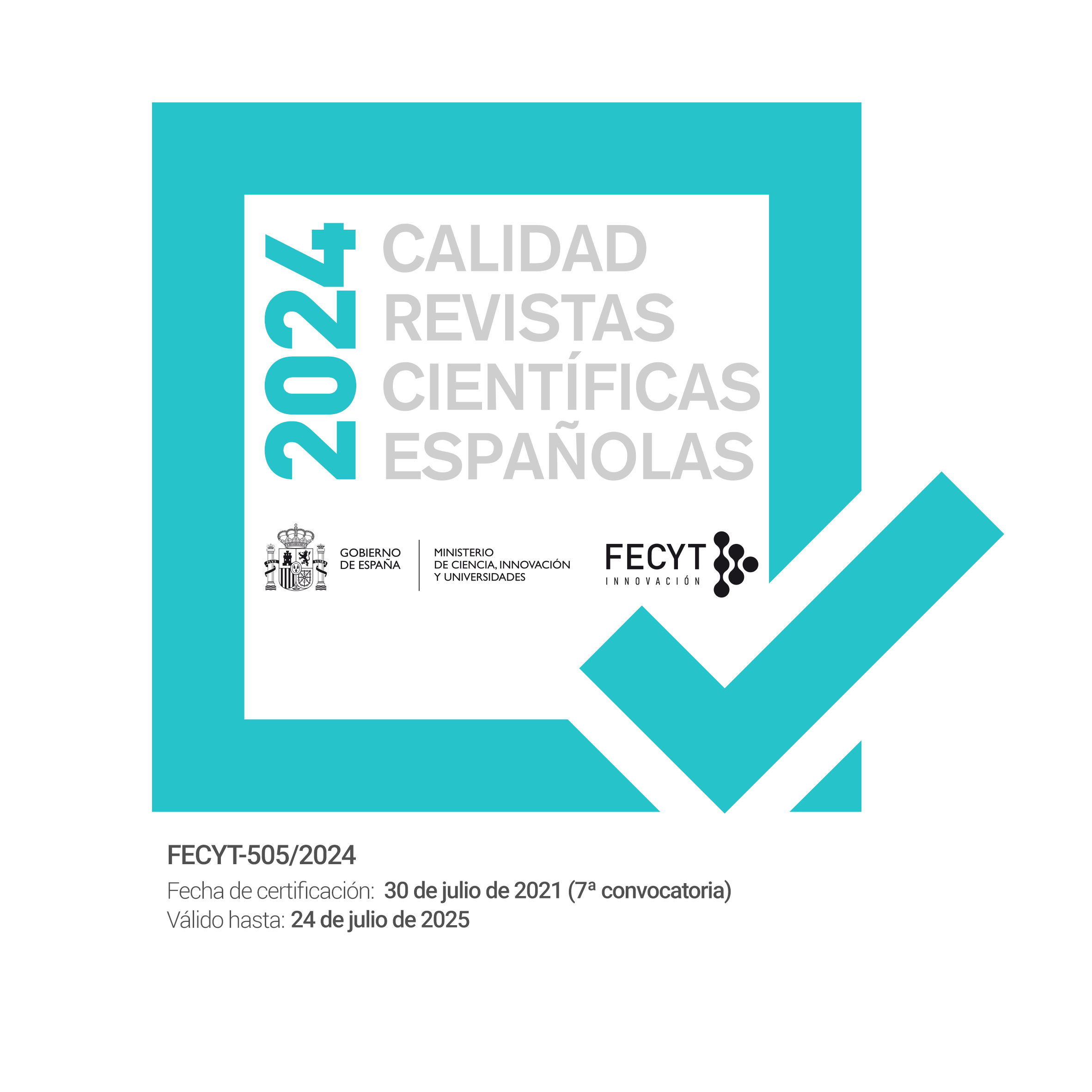Jardines en llamas. A vueltas con Fahrenheit 451
DOI:
https://doi.org/10.7203/qfia.7.2.18800 Resumen
Resumen
Gardens on Fire. Fahrenheit 451 Revisited
Resumen: En este trabajo proponemos una reconsideración de una de las historias distópicas más populares y discutidas desde mediados del siglo XX, Fahrenheit 451, del escritor y ensayista estadounidense Ray Bradbury. Aunque esta historia ha atraído desde su publicación la atención del pensamiento político y social, creemos que ha sido ampliamente simplificada. A diferencia de ciertos críticos, no creemos que la fábula política de Bradbury fomente, como muchas otras distopías, una falta de perspectiva histórica o una insuficiente comprensión del presente. Si la visión política y cultural de Bradbury es criticable no lo es por su evasión de la historia, sino más bien por una visión histórica demasiado optimista. También queremos mostrar que Bradbury no fue un humanista enemigo de la cultura de masas, ni de la tecnología. El examen en profundidad de su novela y de numeroso material complementario (otros escritos, entrevistas y documentos) permitirá explicar porqué su historia sobre el sombrío futuro de la sociedad industrial también contenía elementos para imaginar un futuro alternativo. Gracias a ese examen, finalmente, concluiremos que en el caso de Bradbury la ciencia-ficción no solo sirve para imaginar un futuro indeseable, sino, sobre todo, para mantener vivas y transformar tradiciones con las que fabricar un futuro deseable.
Abstract: In this paper we propose a reconsideration of one of the most popular and discussed dystopian stories since the mid-20th century, Fahrenheit 451, by the American writer and essayist Ray Bradbury. Although this novel attracted the attention of political and social thought since its publication, we think that it has been largely simplified. Unlike some critics, we do not consider that Bradbury's political fable, like many other dystopias, fosters a lack of historical perspective or an insufficient understanding of the present. If Bradbury's political and cultural vision is open to criticism, it is not only for his evasion of history, but rather for an overly optimistic historical vision. We also make clear that Bradbury was not a humanist enemy of mass culture and technology. A close reading of his novel and numerous supplementary material (other writings, interviews and documents) make us to elucidate why his story about the bleak future of industrial society also contains elements to envisage an alternative future. Thanks to this examination we will conclude that, in the case of Bradbury, science-fiction does not serve just to foretell an undesirable future, but it significantly helps to keep alive and to transform traditions with which to manufacture a desirable future.
Palabras clave: distopía, tecnologías, libros, memoria, Bradbury.
Keywords: dystopia, technologies, books, memory, Bradbury.
 Descargas
Descargas
 Citas
Citas
ADORNO, T. W. (2008) “Aldous Huxley y la utopía” [1942] Prismas. Crítica de la cultura y sociedad I. Obra completa 10/1, Madrid, Akal.
AGGELIS, S. L. (ed.) (2004) Conversations with Ray Bradbury, Jackson University Press of Mississippi.
BELEY, G. (2006) Ray Bradbury Uncensored, Lincoln, Nebraska, iUniverse,
BRADBURY, R. (1991) “Beyond 1984: The People Machines” [1982], en Yestermorrow. Obvious Answers to Impossible Futures, Santa Barbara, Joshua Odell Editions.
BRADBURY, R. (1993/2012) Farenheit 451, PenguinRandom House.
BRADBURY, R. (1993/2020) “El peatón” [1951], en Las doradas manzanas del sol, Barcelona, Planeta.
BRADBURY, R. (1995a) “Invirtiendo centavos: Farenheit 451” [1982], en Zen en el arte de escribir, Barcelona, Minotauro.
BRADBURY, R. (1995b) “Borrado y a cargo de una bicicleta” [1980], enZen en el arte de escribir.
BRADBURY, R. (1995c) “Metiendo Haiku en un rollo” [1982], enZen en el arte de escribir.
BRADBURY, R. (1995d) “La dicha de escribir” [1973], en Zen en el arte de escribir.
BRADBURY, R. (1995e) Prólogo a en Zen en el arte de escribir.
BRADBURY, R. (2002) “Los desterrados” [1950], en El hombre ilustrado, Barcelona, Planeta/Minotauro.
BRADBURY, R. (2005a) “All’s Well that Ends Well… or, Unhappily Ever After” [2003] enBradbury Speaks. Too Soon from the Cave, Too Far from the Stars. New York, Harper.
BRADBURY, R. (2005b) “Remember of Book Past” [2004], en Bradbury Speaks.
BRADBURY, R. (2005c) “Lord Russell and the Pipsqueak” [sin datar], en Bradbury Speaks.
BRADBURY, R. (2006) Prólogo de 1993 a Fahrenheit 451, Almería, Ediciones Perdidas.
BRADBURY, R. (2008) Farenheit 451, Harper Voyager.
BRADBURY, R. (2009) Introducción a Farenheit 451, novela gráfica, Penguin Random House.
BRADBURY, R. (2011a) “Fireman” en A PleasuretoBurn: Fahrenheit 451 Stories. Nueva York, Harper.
BRADBURY, R. (2011b) Bonfire” [1950], en A Pleasure to Burn: Fahrenheit 451 Stories.
BRADBURY, R. (2011c) “Bright Fenix” (1948), en A Pleasure to Burn: Fahrenheit 451 Stories.
BRADBURY, R. (2015) “Usher II” [1950] en Crónicas marcianas, edición especial del 60 aniversario, Barcelona, Minotauro/Planeta.
BRADBURY, R. (2013) Poesía completa, Madrid, Cátedra.
DEL CASTILLO, R. (2019) El jardín de los delirios, Madrid, Turner.
ELLER, J. R. (2011) Becoming Ray Bradbury, Urbana, University of Illinois Press.
ELLER, J. R. y TOUPONCE, W. F., (2008) “The Simulacrum of Carnival in Fahrenheit 451” [2004] en Ray Bradbury’s Fahrenheit 451, Bloom’s Modern Critical Interpretations, Nueva York, Infobase Publishing.
FERRINI, F. (1971) Qué es verdaderamente la ciencia-ficción, Madrid, Doncel.
GASCA, L. (1975) Cine y ciencia-ficción (1896-1973), Barcelona, Planeta.
GÓMEZ LÓPEZ, J. I. (2013) Estudio preliminar a Bradbury, R., Poesía completa, Madrid, Cátedra.
JAMESON, F. (2005a) “Philip K. Dick in memoriam” [2000] en Arqueologías del futuro, Madrid, Akal.
JAMESON, F. (2005b) “Historia y salvación en Philip. K. Dick”, en Arqueologías del futuro.
JOHNSON, W. (1980) Ray Bradbury, Nueva York, Frederick Ungar.
KAGARLITSKI, Y. (1974) ¿Qué es la ciencia-ficción? Madrid, Labor.
KAGLE, S. (2008) “Ray Bradbury and the Nineteenth-Century American Romance” [1992], en Ray Bradbury’s Fahrenheit 451, Bloom’s Modern Critical Interpretations, Nueva York, Infobase Publishing.
KLEIMAN, D. (1986) “Bradbury Transforms Farenheit 451 for Musical”, New York Times,25/8/1986: https://www.nytimes.com/1986/08/25/theater/bradbury-transforms-fahrenheit-for-musical.html
MARKS, P. (2011), “Farenheit 451 at Round House Theatre”, The Washington Post, 19/ 09/2011.https://www.washingtonpost.com/lifestyle/style/fahrenheit-451-at-round-house-theatre/2011/09/19/gIQAmmVNgK_story.html
PRON, P. (2014), El libro tachado. Prácticas de la negación y del silencio en la crisis de la literatura, Madrid, Turner.
RINGHAM, E. (2016): “Think of this Play as Farenheit 451.3” MPRNEWS, 12 /1 /2016: https://www.mprnews.org/story/2016/01/11/ray-bradbury-fahrenheit-451-play-review.
SPENCER, S. (2008): “The Post-Apocaliptic Library: Oral and Literate Culture in Fahrenheit 451 and A Canticle for Leibowitz” [1991] en R. Bradbury’s Fahrenheit 451.
STEVEN, A. L. (ed.) (2004), Conversations with Ray Bradbury, Jackson University Press of Mississippi.
TEYSSOT, G. (ed.) (1999), The American Lawn, Princeton Architectural Press.
WELLER, S. (2010), Listen to the Echoes. The Ray Bradbury Interviews, Nueva York, Melville House.
WELLER, S. (2006) The Bradbury Chronicles: The Life of Ray Bradbury, Nueva York, Harper.
WHITE, M. y WHITE, L. (1967), El intelectual contra la ciudad. De Thomas Jefferson a Frank Lloyd Wright, Buenos Aires, Ediciones Infinito.
ZIPES, J. (2008) “Bradbury’s Vision of America in Fahrenheit 451” [1983], en Ray Bradbury’s Fahrenheit 451, Bloom’s Modern Critical Interpretations, Nueva York, Infobase Publishing.
Descargas
Publicado
Cómo citar
-
Resumen966
-
PDF1685
Número
Sección
Licencia
![]()
Las obras publicadas en Quaderns de Filosofia se encuentran bajo la licencia de Creative Commons Reconocimiento-NoComercial-SinObraDerivada 4.0 Internacional.
Los autores que publican en esta revista están de acuerdo con los siguientes términos:
- Los autores conservan los derechos de autor y garantizan a la revista el derecho de ser la primera publicación del trabajo al igual que licenciado bajo una Creative Commons Attribution License que permite a otros compartir el trabajo con un reconocimiento de la autoría del trabajo y la publicación inicial en esta revista.
- Los autores pueden establecer por separado acuerdos adicionales para la distribución no exclusiva de la versión de la obra publicada en la revista (por ejemplo, situarlo en un repositorio institucional o publicarlo en un libro), con un reconocimiento de su publicación inicial en esta revista.
- Se permite y se anima a los autores a difundir sus trabajos electrónicamente (por ejemplo, en repositorios institucionales o en su propio sitio web) antes y durante el proceso de envío, ya que puede dar lugar a intercambios productivos, así como a una citación más temprana y mayor de los trabajos publicados (Véase The Effect of Open Access) (en inglés).





